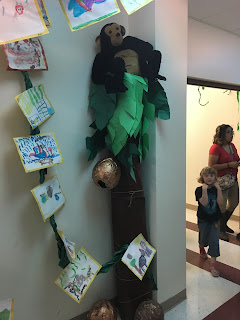I spent the first four days of last week at CPI Nonviolent Crisis Intervention training. I am now a certified NCI Instructor.
The NCI course is focused on developing skills to minimize crisis situations as well as respond to them when necessary. It was beneficial and I hope that we can get more in our district trained soon.
One of the key points in the training is a concept called Integrated Experience. In layman's terms, this means "Behavior influences behavior." Think about that. Behavior Influences Behavior. Simply put, the way we behave can influence the way our students (or spouses, coworkers, family, etc) behave.
Let me give you some examples. Let's say you are teaching and your keep raising your voice. What do your kids do? Usually raise their voice. If you are talking softly, but with authority, your kids will usually talk quieter as well.
When I am at home with my teenage son, I will sometimes get frustrated and raise my voice at him. He responds by raising his voice back. What do I do? "Don't you raise your voice to me!" This only causes him to raise his voice again.
A student is visibly anxious, slumped over, tapping their feet. Their teacher approaches them and says sternly, "Sit up straight and stop tapping! You've got work to do." The student jumps back and shouts, "Leave me alone."
Picture the same situation. This time the teacher approaches, bends down, and quietly says, "You look like something is bothering you. How can I help you?" The student says they are not feeling well and asks for a drink of water. The teacher sends them out and they come back and go to work.
In each of these cases, the adult's behavior directly impacted the child's behavior.
As educators, the way we respond to a situation can either help defuse it or cause it to escalate. The course goes into this in detail, but in a nutshell, our behavior is often the deciding factor in how a situation turns out.
I encourage you to spend some time reflecting on situations you have faced this week. Ask yourself some tough questions such as, "How did my behavior influence how the other person behaved?" and "What could I do differently the next time I'm faced with this?"














